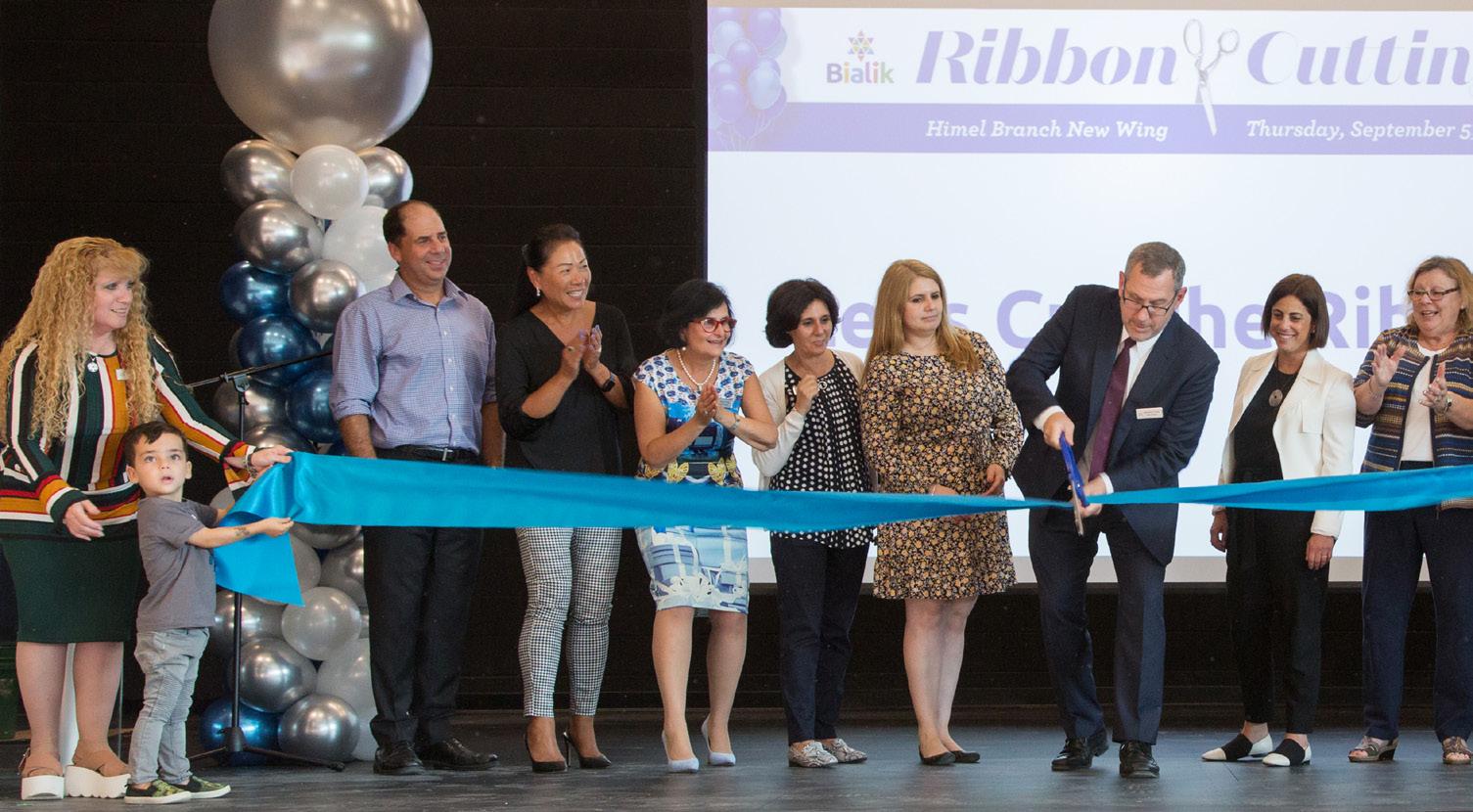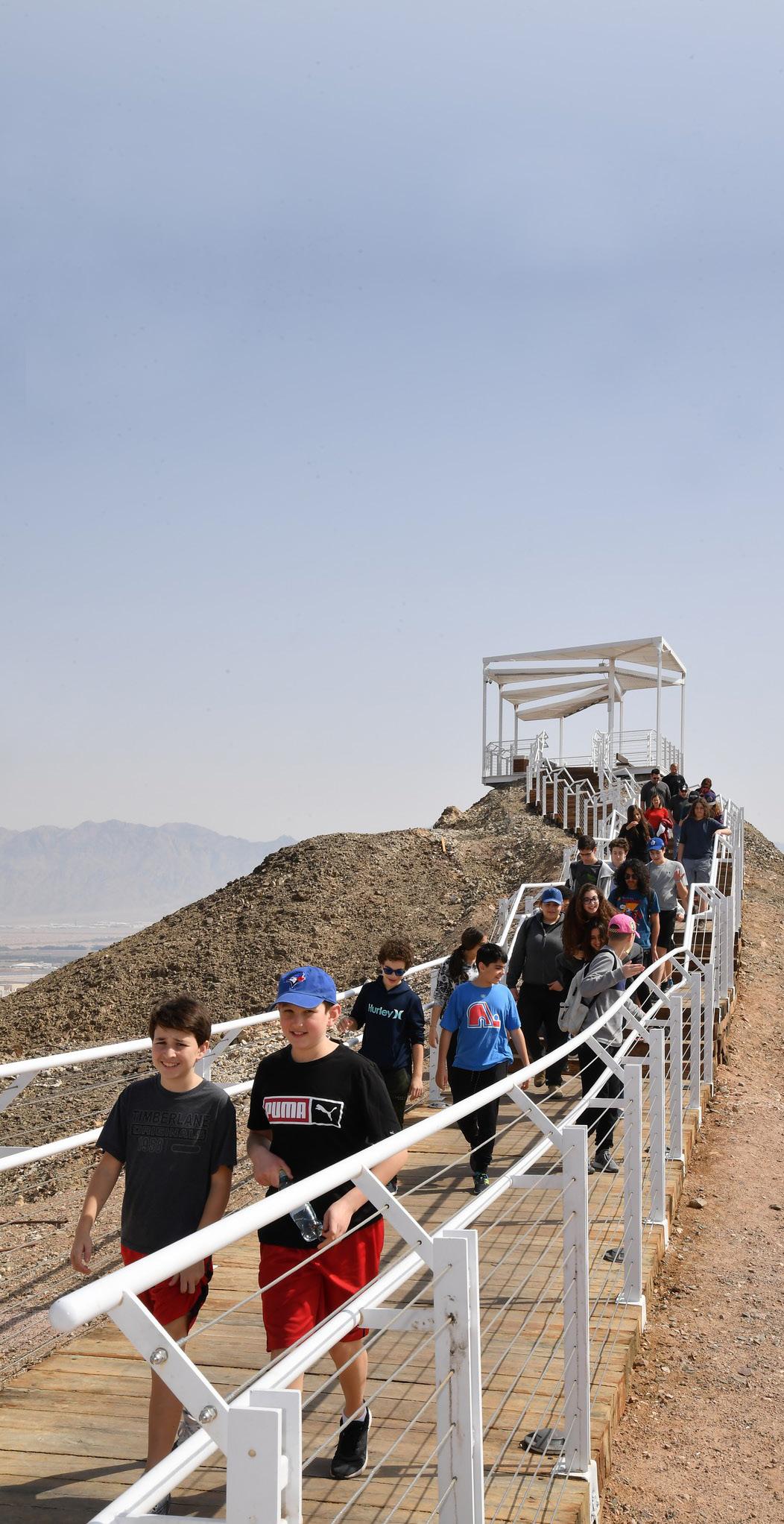
24 minute read
STEM + Israel
= BIALIK SUCCESS
For fifteen Grade 8 students, what began as a STEM competition in Israel became a powerful, eye-opening, unforgettable experience. This groundbreaking program combined Bialik’s focus on STEM education with its commitment to Israel.
The teens spent four months creating a prototype product designed to impact the environment by saving energy. Then, they travelled to Israel to compete in a Dragon’s Den-style program alongside a team of Israeli teens from the Gvanim School in the Eilat region.
Before the start of the competition, the students spent five days touring, learning and living with their Israeli counterparts. During that time, competitors became friends and indelible memories were created. They enjoyed team-building activities, including a daring ropes course at a camel ranch, all the while getting to know their new friends better.
These authentic Israeli experiences became a hallmark of the trip. Students spent Shabbat with their host families and had opportunities to hang out together. As one Bialik student described, “We got closer with the Israeli kids; it was fun to be with them; we sat on the beach and talked to them and really got to know them.”
With a packed itinerary, Canadian and Israeli teens visited numerous sites focusing on sustainability. And fun.
At the competition, seven teams, four from Bialik and three from Gvanim, presented their prototypes designed to “engage innovative technologies to help solve the world’s energy challenges.” Ultimately, Bialik teams placed second and third or, as they preferred to say, “first in North America.” The Bialik prototypes included a showerhead equipped with a motion sensor and a smart web-based parking space reservation system. This trip was also an opportunity to have years of classroom learning spring to life. One student said: “This was my first time in Israel. I learned Hebrew at school but I had never actually seen Hebrew outside of Bialik. But in Israel, it’s on street signs and in restaurants. It was fascinating to see.”
Reflecting on the obvious success of the program, Head of School Benjy Cohen said, “This is the ultimate in mission-based education. We married two of the most vital components of Bialik’s approach — STEM education and Israel engagement — to create a powerful experience that will have lasting impact for both the students and the school.”
STEM IS SHAPING OUR THINKING
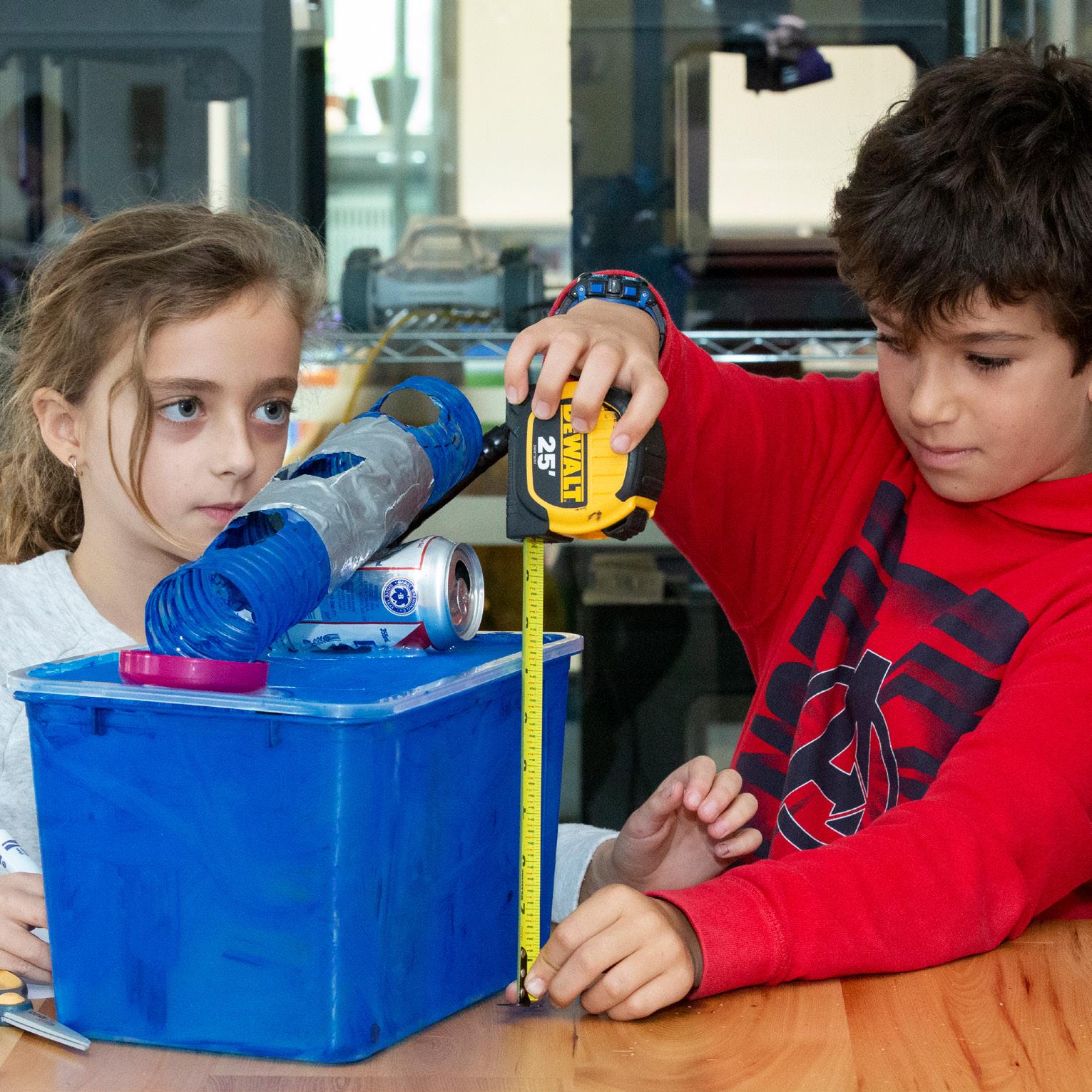
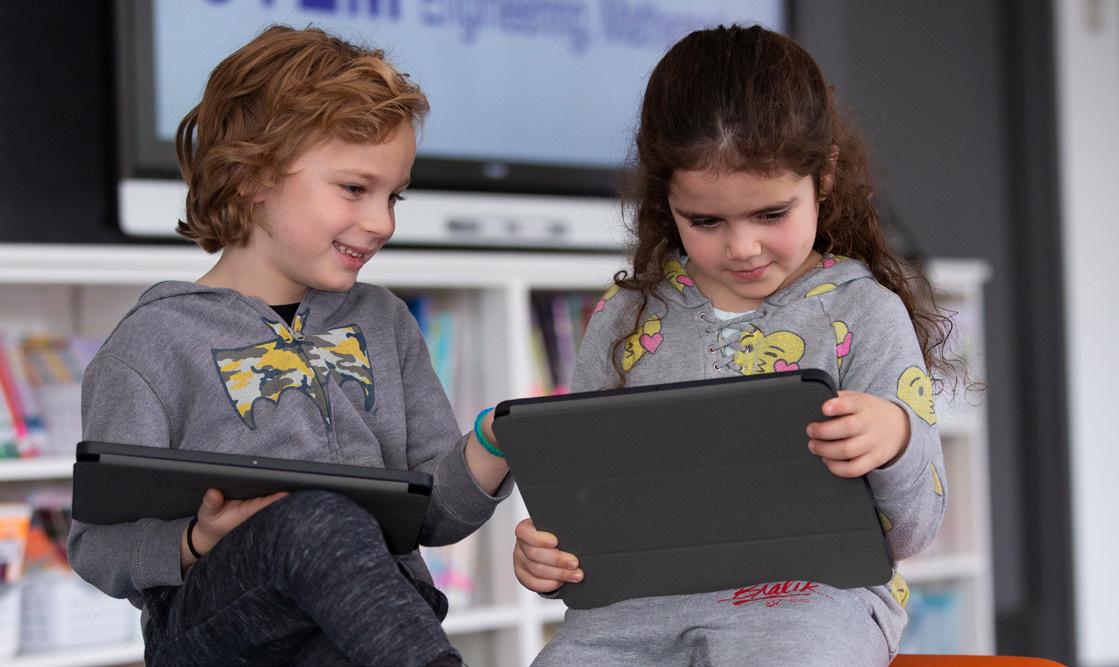
When Shoshana Taitz, Director of General Studies, speaks about Bialik’s STEM approach, you feel her passion. While most schools have introduced STEM as a subject, at Bialik, STEM is an approach to learning that is integrated into every grade, subject and classroom.
She begins by explaining, “The STEM approach includes a commitment to the design thinking process and multi-disciplinary problem solving.” This means that students get very engaged in their projects, learning ways of thinking as well as technical and hands-on skills. Students learn to go through the five steps of the design thinking process and come up with their own creative ideas to solve the problem at hand. “We’re not just examining the problems of today,” adds Shoshana. “We’re solving the problems of tomorrow — like the impending water crisis or the lack of farmland.” STEM at Bialik is a springboard to 21st century learning and provides a cohesive paradigm to focus on solving real-world problems.
With the STEM approach applied throughout the curricula, students are taught to build meaningful learning skills. Students are engaged in collaboration and critical thinking while displaying resilience and openness. Better yet, they are learning to see failure as a necessary step to achieving an end goal. True to Bialik’s mission, the STEM approach has become a major component of Jewish Studies and is strengthening Bialik’s connection to Israel. Last February, a group of Grade 8 students travelled to Israel to take part in a STEM competition (see page 7). The synergy of combining STEM and Israel created an experience that was far more impactful than either would have been on its own.
Bialik students are working cooperatively with students in Eilat to solve problems faced in both their countries. For example, they are learning from the way Israel has tackled water scarcity and finding ways to apply this to future water issues in Canada. Another project involves joint learning about growing crops in extreme weather conditions — Israel’s heat and Canada’s cold.
“STEM has become a shared language and the basis for a true partnership between the Bialik students and those in Israel,” says Shoshana.
Considering the ultimate aim of STEM at Bialik, she reveals, “My dream is that one day, Bialik alumni will return to the school and say they remember discussions about finding ways to meet tomorrow’s unknown challenges — and I hope to hear that’s exactly what they are doing in their adult lives.”
HOSTING SHINSHINIM A Host of Opportunities
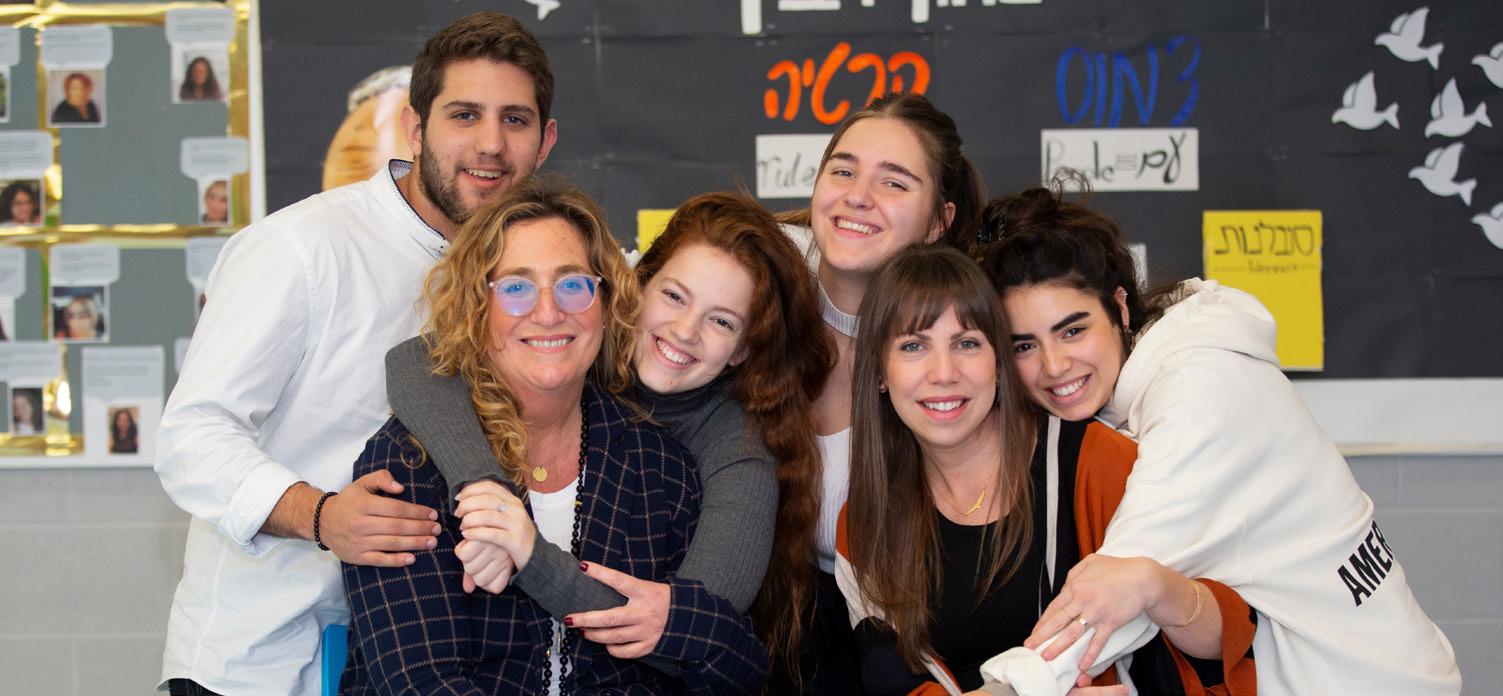
Each year, specially selected 18 year-old emissaries from Israel join the Bialik community, giving our students a very personal glimpse of Israel through programming, songs, stories and conversation.
The young Israelis come here as part of the UJA Federation’s ShinShin program, run in partnership with Jewish schools, synagogues and community organizations. The ShinShinim (it’s an acronym for Shnat Sherut, a year of service) bring an enriching slice of Israeli life to our institutions and community. Bialik’s ShinShinim — two at each branch — are hosted by Bialik families for half a year at a time. To find out more about the hosting experience, we spoke with Jayne Elman and Irit Targonsky. They’re our Bialik parents responsible for recruiting hosts at the Viewmount and Himel Branches respectively, and have each hosted a ShinShin.
While hosting a teenager for six months may at first seem onerous, Jayne says, “You get more than you give and more than you can possibly imagine from the experience of being a host.”
Jayne can’t help smiling as she recalls the impact that hosting a ShinShin had on her family. “Your kids learn how good it feels to open your door to someone and they learn that, as Jews, we have a responsibility for one another. Most importantly,
they learn to give of themselves without expecting anything in return,” she remarks.
“It was so special for my kids,” Irit says fondly. “Whether it was when Noa, our ShinShinit, came with us on day trips or when she just spent time talking to them about her life in Israel, my kids got so much out
ence. “You create a human connection to Israel that you would never otherwise have had,” Jayne says. “It makes Israel seem closer.”
In the end, a ShinShin becomes part of the family. “The time that Noa spent with my kids watching Israeli TV shows, listening to Israeli music and teaching them Hebrew has created a lifelong connection,” enthuses Irit. “We still stay in touch.” Jayne agrees: “You eat together, cook together and talk about their experiences. It’s a very special, life-changing opportunity.”
Hosting one of the ShinShinim really does present our families with great opportunities and requires no special qualifications or experience. As Jayne says, “All you really need to host a ShinShin is an open heart — and a spare bedroom.”
of the experience.”
The ShinShinim are remarkable. “You have to remember that these teens are the best of the best. They have been specially chosen from 2,000 applicants,” explains Irit. “They are respectful, hardworking and a joy to have in your home.”
The goals of the ShinShin program align perfectly with the special emphasis that Bialik places on Israel and that becomes part of the hosting experi
TO FIND OUT MORE ABOUT HOSTING OPPORTUNITIES, PLEASE CONTACT: Jayne (Viewmount Branch) jayneelman@sympatico.ca or Irit (Himel Branch) ee.reet@gmail.com.
HOUSES MAKE BIALIK A SECOND HOME
Have your children come home cheering and yelling out names like “Hebrew U” or “Haifa-Technion?” No, they’re not thinking ahead to their university choices, they’re showing their ruach for Bialik’s House program. Started in 2006, the house system at Bialik is a successful pro gram that unites Grade 2-8 students in an exciting spirit of camaraderie, Ahavat Israel and leadership. “Houses are an opportunity to connect students in a way that is very different than the regular classroom experience,” explains Blake Enzel, Vice Principal of the Senior Division. “They create a sense of belonging within the larger school community.”
In Grade 2, students are assigned to one of the four houses, which are all named after Israeli universities. These names reinforce Bialik’s focus on cultivating Ahavat Israel (a love of Israel) and building Jewish identity. Siblings and cousins are all part of the same house, instilling a sense of family and community that is integral to the spirit of the school.
House activities throughout the year are a lot of fun for students as they earn points for their house while developing a friendly competitive spirit and a healthy
sense of self-worth. “It’s fun getting everybody excited to come to school and do house events,” says captain Jamie Sugar. “We get to compete with other houses and try to win.”
Houses also provide students with many leadership opportunities, such as being captains and banner keepers, where they can develop their skills and a sense of responsibility. “I wanted to become a house captain to take on a leadership role,” shares house captain Ethan Reiken. “I can take part in something important within the school and get other students involved with programs.”
“The house system is accessible to everyone,” says Blake. “If math is really hard or history is really hard, you get to use a different skill set when you are competing in your house. You may be developing a cheer or working with your teammates, and this gives you a new place to shine.”
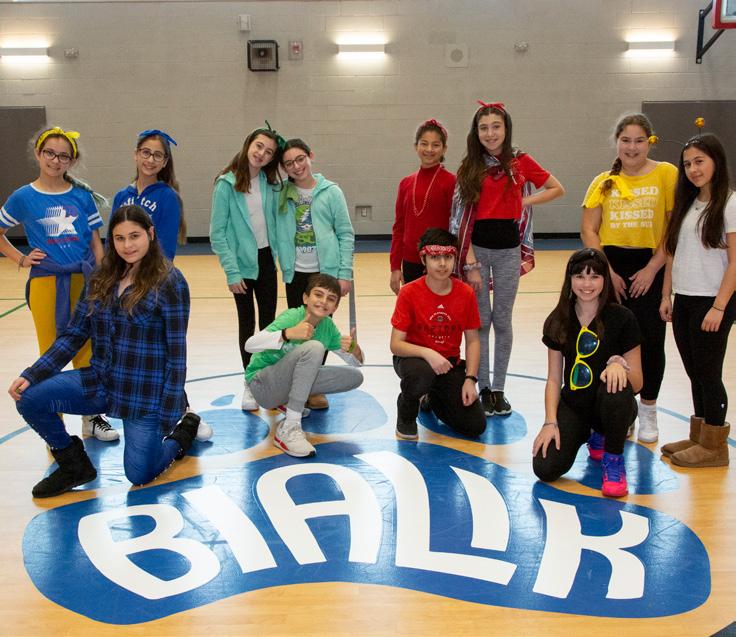
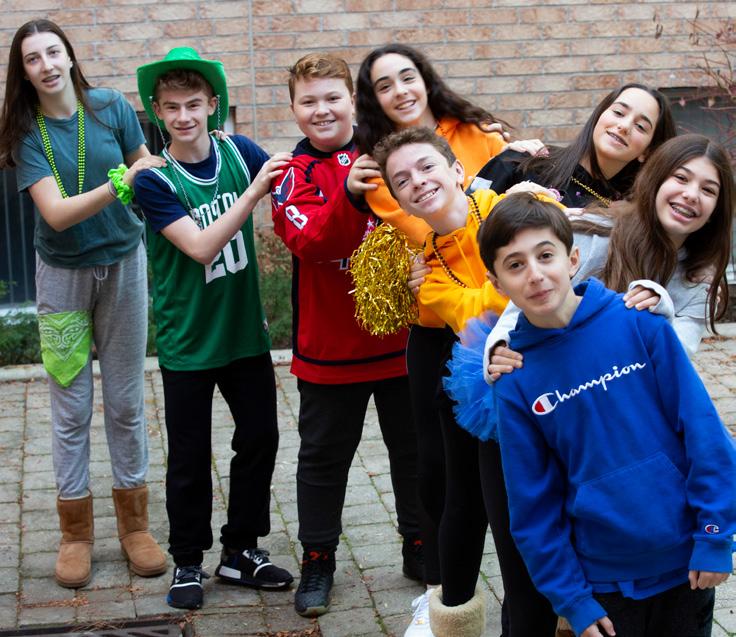
WINNING MOMENTS We all shep naches when our students do well and we love to share these stories. Here are a few of our proud moments.
CANADIAN BIBLE CHAMPION

Mazal tov to Samuel Gwosdy, Canada’s 2019 Bible Contest Champion, who won the National Chidon HaTanach in Montreal. In the months running up to the contest, he and his teammates — at both Himel and Viewmount Branches — met weekly with their coach, Hannah Isaac, who kept them fuelled and engaged with bagels, cream cheese and bible stories. We are so proud of Samuel, who was then in Grade 6, as well as all Bialik team members for their dedication and hard work in preparing for the contest.
12 ART COMPETITION WINNERS

Five Himel students were thrilled to be announced as winners of the 2019 JMW Student Art Contest, part of Jewish Music Week in Toronto. With many outstanding entries, it wasn’t easy for the judges to make their selection. As we heard from the Chair, Cheryl Cappe, “The judges considered each entry carefully with attention to skill as well as its relevance to this year’s theme, How Jewish Music Makes Me Feel.”
MAZAL TOV TO: Sloane Diamond (then in Grade 3): First Place Yam Erez (then in Grade 3): Second Place Liora Melzer (then in Grade 3): Third Place Jessica Zak (then in Grade 5): Honourable Mention Danna Nicole Freiman (then in Grade 6): First Place
CREATIVE ROBOTICS WINNERS
Sarit Nagel and Hadasse Kernerman (then in Grade 7), distinguished themselves by winning the Toronto-wide 2019 Jewish Day School Robotics Competition. They impressed the judges with their clean and accurate coding and their perseverance. They won an additional award for the most creative design.
Collaboration and teamwork were essential to their success. Says Sarit, “Hadasse and I worked really well together. Our programs were very complex to make the robot do what we wanted it to do. We won the competition because our robot completed the most tasks the fastest.”
“For each challenge,” explains Hadasse, “we had to do different tasks with the robot’s arm. So, instead of using the same arm, we decided to change the arms for each challenge. This would make them the most efficient and effective for what they had to do. These tasks included making the robot follow a line and then lift something, or push something into a spot, or move through a maze.”
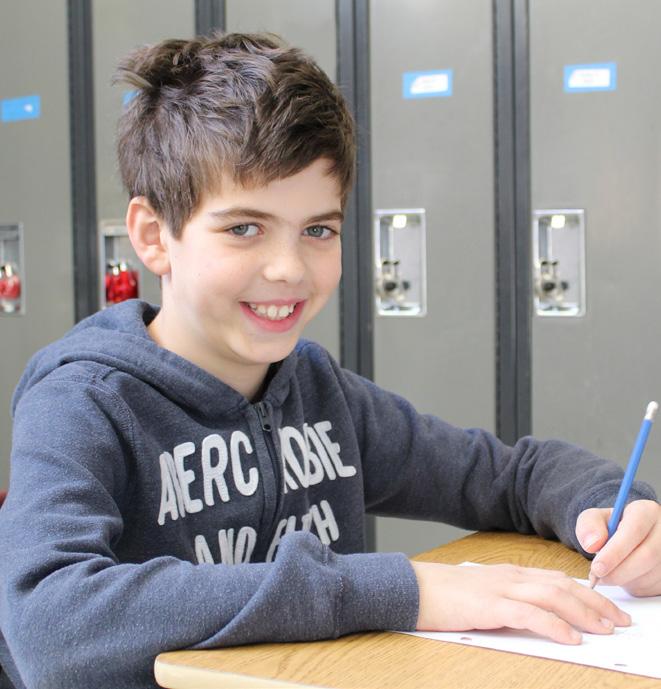

SUCCESS IN THE CARIBOU MATH CONTEST
Kol HaKavod to Grade 5 student Ryan Grevler, for placing 48th out of the 11,528 Grade 5 and 6 students from around the world who wrote the 2019 Caribou Math Contest. Ryan’s success is owed to his keen number sense and ability to tackle problems in interesting and creative ways.
Teacher Rebekah Houpt, who works with Ryan in Math Club, says, “Ryan’s approach to math is unique in the way he embraces and welcomes a challenge. In the Caribou Contest, students never know the types of problems they will face, and Ryan is able to approach each question from multiple angles. His is always willing to put in the work and persist in problem solving.”
Ryan’s approach to math is a shining example of the growth mindset that Bialik imparts to our students, and we are so proud of his success.
LESSONS IN TRADITION
How did two teachers in the public sector choose to send their children to Bialik? Miriam Sieradzki admits it was a bit of a “hard sell” to convince husband Steven Leder to send their children to Bialik. Though public school teachers themselves, Sieradzki had a meaningful, formative experience as a student at the Jewish People’s Elementary School and Bialik High School in Montreal. Though Steven attended Associated Hebrew Schools of Toronto, he was less inclined — initially.
Fast forward seven years and this couple is among the school’s most passionate champions. With their son, Coby, in Grade 5 and their daughter, Sierra, in Grade 3 at the Himel Branch, they extol Bialik’s dedication to social justice and character building, in addition to the creativity and rigour of its academic program.
So how do two teachers in the public sector keep their feet in both educational worlds?
“I had a very traditional upbringing,” says Miriam, who teaches Grade 6. “I always had an appreciation for Israel and I wanted the same for my kids.” Bialik’s values also resonate for Steven, a 22-year veteran educator.
“Even though I’m a teacher, school isn’t just about academics,” says Miriam. A project that had a big impact on Coby in Senior Kindergarten focused on a former Bialik student who was ill at SickKids. “If my son sees a guy on the road with a can, he wants to help. He’s developing a genuine kindness and an open heart.” As well, she finds opportunities to apply some of Bialik’s innovative interpretation of the Ontario Curriculum at her own school. “I saw what Bialik was doing in Grade 1 and 2 math; it was really centred on taking challenges and building a growth mindset. I asked if I could show my own principal what we were doing,” she says.
Most importantly, Bialik’s focus on personal attention is a singular offering. “The daily communication is just different,” she says. Having teachers or even the principal say, ‘Do you know what Coby did today to help out another student?’ is so special. They’re always pointing out the positive in both my kids. We feel like a big family; it’s more than just a school.”

EDUCATION THAT COMES FULL CIRCLE
It was a magic moment. Grade 8 student Olivia Kramer offered a tribute to her 96-year-old great-grandfather and Holocaust survivor Saul Miller (who, sadly, passed away soon after), as part of the school’s Yom HaShoah assembly in May. Her brother Cole, then in Grade 6, stood close by his “Little Zaidie,” who lit a memorial candle.
“It’s moments like these that make Bialik so special for our family,” reflects the students’ mother, Melissa Kramer.
“We love the way that Bialik teaches the whole child,” she says. “Children learn important Jewish values; they learn respect; they learn our traditions and where we come from. But that’s not all — with Bialik’s forward-thinking approach, their emphasis on innovation and the use of technology, we see how the school comes full circle.”
It’s a fitting legacy, therefore, that Melissa and her husband, Justin, chose to name the Kramer Family Think Tank in Viewmount’s Aronson Family STEM Learning Commons. The Kramers are very happy to be providing a space where students will be able to work together, use the technology they need, and find ways to make their (even crazy) ideas happen. “Seeing the school evolve its approach to education is a value that’s close to us,” says Justin. “The current system can be too linear for many kids — subject by subject, grade by grade.”
A financial-services entrepreneur and South African native, he remembers his university days, at a time when the education system didn’t nurture or reward innovation. “I was running a business when I was meant to be studying,” Justin says. He welcomes the STEM approach, with its hands-on, problem-based collaborative work, integrating technology and design thinking to enhance the curriculum. Melissa, who is co-chair of Bialik’s Annual Campaign, is a passionate champion of the school’s support for the unique learning style of each child. For example, Cole was initially unsure of participating in the annual Yiddish Night. “He was not too happy about it, but now he’s doing a Yiddish rap and he comes home so excited! I love the way the school was able to engage him.”

Olivia graduated to TanenbaumCHAT this year, but still misses Bialik’s warm and supportive environment. True to her own style, she enjoyed great leadership opportunities at Bialik, notably as the Student Council event coordinator. “She’s a real self-starter and was always so excited about what she was learning,” says Melissa.
Justin and Melissa are delighted Cole will have opportunities to use the Aronson Family STEM Learning Commons, as will their niece and nephew, Alex in Grade 5 and Cooper in Grade 3. “It warms my heart to think about the impact that Bialik has on our kids — as Jews and as learners,” says Melissa.
LANGUAGE OF MUSIC
For Aaron Schwebel’02, the similarities between music and language are profound. “They both have grammar and fluidity,” he remarks, “and turning musical notes into a melody is like using words to speak full sentences.” It’s not surprising that Aaron, who is the Concertmaster with the National Ballet of Canada as well as the Associate Concertmaster with the Canadian Opera Company, associates his study of four languages at Bialik with his proficiency as a violinist.
Looking back, Aaron makes strong connections between his musical development and his years at Bialik. “Flexing the intellectual muscles needed to learn multiple languages was good for my growth in music. Mimicry and making aural connections are important to learning both music and languages.”
Beyond just languages, Aaron remembers Bialik as a “well-rounded environment that encouraged overall growth.” There were certain teachers who made a mark on his development. Mrs. Mendelaoui established the perfect balance between a firm hand and nurturing support. “I learned a lot about right and wrong from her,” he notes. “Madame Young (now the Himel Branch Principal) made me realize I was good at languages but, more importantly, she was always interested in our lives outside of school. Her humour and humanity went a long way,” he recalls.
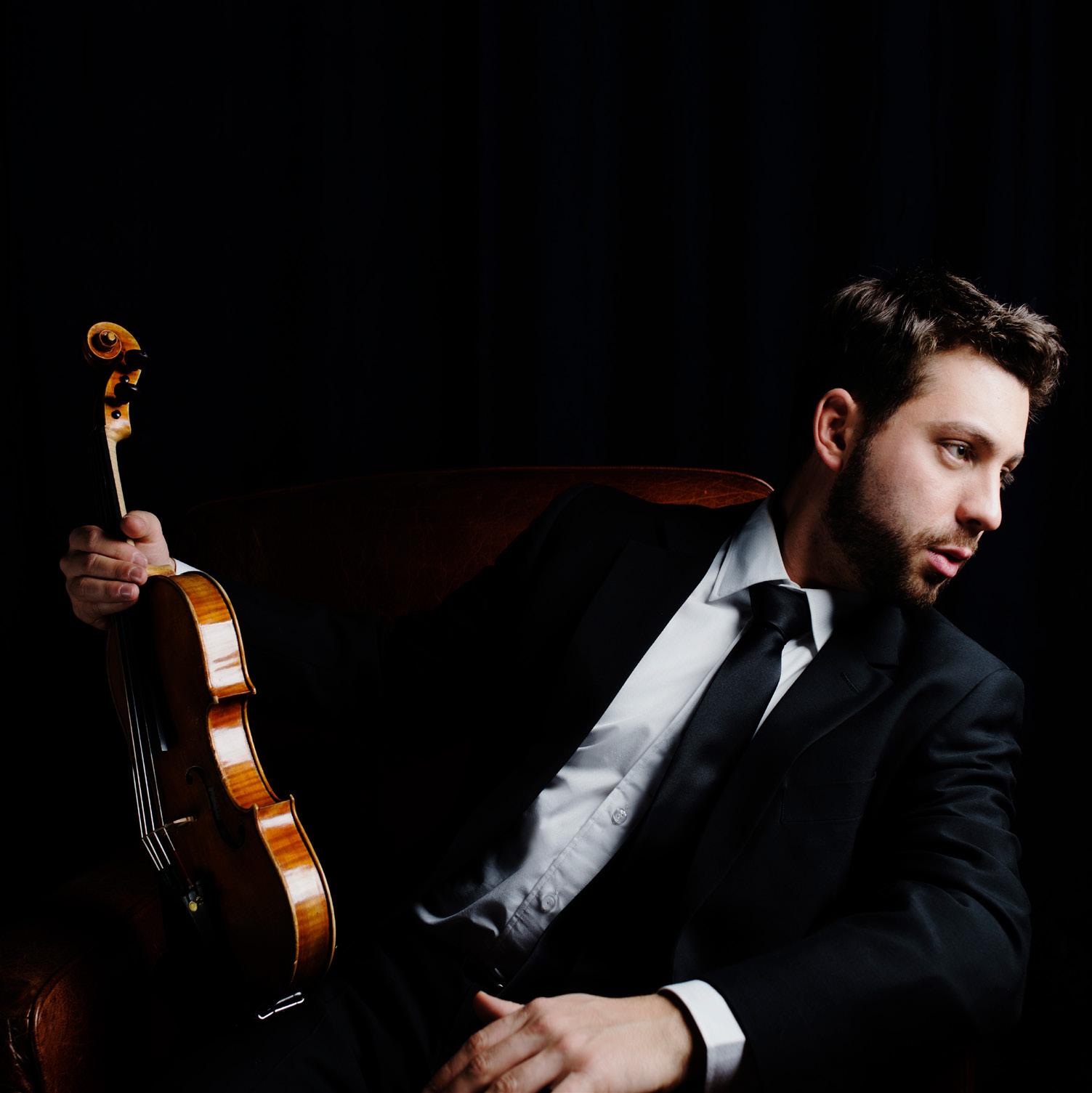
After Bialik, Aaron attended University of Toronto Schools (UTS) and went on to earn his bachelor’s degree in music at McGill University, where he received the Schulich School of Music’s Golden Violin Award. While pursuing his master’s degree at Indiana University, he began playing with the Kuttner Quartet, Indiana’s resident string quartet. This was when his career took off, with multiple opportunities for Aaron to play with prestigious orchestras, ensembles and chamber groups. The “musicality of language” is something that he still thinks about. “I see playing violin with other performers as a conversation. Having the opportunity to learn languages at Bialik introduced me to rhythm, inflection, sound and gesture — all of which are essential to music.” Bravo, Bialik.
SUCH GREAT HEIGHTS The successful trajectory of a self-starting STEM star

It’s not often that you find a young millennial who is as well versed in engineering as she is in the world of venture capitalism; but then, Isabel Hazan’12 is not your average twenty-one-year-old. Isabel’s trajectory from Bialik grad to STEM trailblazer is filled with accolades that would make anyone proud. And she’s just getting started.
Isabel is currently in her fourth year at Queen’s University, where she is studying Applied Mathematics and Mechanical Engineering on a Schulich Leader Scholarship. She has numerous awards to her credit, such as the Cansbridge Fellowship — a prestigious international internship program that has taken her from Silicon Valley to Singapore. She has also participated in the Queen’s Innovation Centre Summer Initiative that mentors students on how to launch their own ventures.
She says that math and science were always “her thing” while studying at Bialik, but it was also Bialik’s focus on critical thinking and being a selfstarter that helped propel her to success. “I think that the Science Fair is probably the most beneficial thing that I did at Bialik. It was difficult at the time, but it really made us step into our potential, take initiative, come up with our own ideas and execute them. There are a lot of elements to it. When I think of it now, I am shocked that I did it as a thirteen-year-old.” Isabel attributes her determination to her day-school education: “I think the Jewish education system really pushes students and puts them on a path of learning to challenge themselves.”
She chose to go into the most difficult stream of engineering at Queen’s, with the confidence that the foundation and logic she’s developing could be applied across multiple fields in the future.
“I figured out pretty quickly that engineering is not necessarily the end game for me. I’m interested in venture capital or a smaller corporation where I would be able to really move the needle and make a more significant impact with my work. There is a big demand for engineers in business roles.”
Indeed, Isabel has already lined up an exciting position that will start this August after graduation. She will be working with Leaders Fund, a Canadian Venture Capital firm backed by business mogul and philanthropist, Seymour Schulich, and we can’t wait to see where it takes her.
LIVING OFF THE LAND The seeds of passion for sustainable farming were sown young

Jared James’01 knew, early on, he would follow a road less travelled by fellow Bialik peers. He owns Timberline Farm, on 149 acres in Harriston, Ontario, selling grass-fed beef directly to his customers. More than half his property is dedicated to wildlife habitat conservation, with a focus on tree planting. The youngest of three Bialik siblings, he graduated with a passion for the environment. This interest was further bolstered by time spent as a canoe tripper at summer camp. He started out as an ecology major at the University of Guelph but graduated with a degree in natural resources, realizing this shift would afford an opportunity for further field work.
“I was visiting everything from quarries and forestry operations to farms and municipal waste man
agement facilities,” he says. “It gave me a very strong understanding of how we’re harvesting resources to a degree that’s not necessarily sustainable.”
Encouraged by his studies, Jared spent more time at his family’s farm, which his grandfather had purchased after escaping from Germany during the Second World War. The farm had been developed for agriculture in the 1800s, but had been uninhabited for decades.
“I had a fairly unique opportunity; I realized we had in our possession a huge, underutilized resource,” says Jared. “Not everybody can raise cows the way I do because you need lots of land and it’s extremely expensive these days. I wasn’t an expert, but I knew I could make a reasonable go of things and, hopefully, be successful.”
While aquaponics wasn’t in the curriculum when he attended Bialik, nor was a greenhouse part of the facilities, Jared appreciates that his Jewish education helped nurture his passion for land stewardship.
“My first introduction was Tu B’Shvat,” he says. “That celebration instilled in me the value that planting trees is a good thing. I don’t know of other religions where holidays specifically revolve around that type of mitzvah. [I learned that] you plant trees as a legacy. We also learned about the Kibbutz system, a successful example of communal farming and living off the land.”
So too is Jared’s success with sustainable farming another example of a lesson well learned and a legacy for future generations.
REUNITED AND IT FEELS SO GOOD’ ‘
So, what have you all been up to for the past 43 years?” That’s the big question Gordon Hecker’76 asked his former Bialik classmates when he decided to organize a reunion.
Currently living in Ohio, Gordon dreamed up the plan while back in Toronto visiting his old Bialik friend, Richard Berg, last year. “We’d only seen each other twice since Grade 8; it was so nice reconnecting that it made me want to bring the whole gang together,” he says. A small group got together at Brahm Godel’s home to begin organizing their special reunion. Using a trusty combination of Facebook, LinkedIn, Google — and their mothers — they managed to contact almost all of the 47 classmates. Thanks to their quest to reunite the graduating class of 1976, 25 Bialik alumni got together for a meaningful and memory-filled weekend of revelry and reflection on September 14 and 15, 2019. The class had maintained varying degrees of connection to the school. Many hadn’t seen each other since graduation. Others had sent their children to Bialik or had served as lay leaders within the community. Some had reconnected more recently at a farewell party for longtime teacher Ziona Hagler.
Those who made the trip came from as far afield as Houston, Boston, Pittsburgh and beyond. They went home with a labour-of-love reunion dossier, containing detailed biographies and photos of their classmates.
The weekend’s festivities included a Saturday evening dinner at Sari Stitt’s home, where they shared life stories and fond memories. The group remi“
nisced about playing jokes on each other, playing tennis-ball soccer at recess, and year-end pool parties.
The next morning, a group of 15 visited Bialik’s Viewmount Branch, recalling that the original school had only a single hallway, which now houses Viewmount’s Kindergarten.
When Marvin Lean, who has served on the Bialik Board and headed the alumni committee, encouraged the reunion group to come in for a tour, he was excited to show off the beautiful new facilities. As expected, everyone was impressed, but what he hadn’t anticipated was the rush of emotion that familiar spots would evoke. “The original floors with the red and green terrazzo connected the group to their past and brought back strong memories of their days in school. We took a picture in that place; it really brought us back, physically, to our memories.” Bialik’s Director of Development, Heather Gutmann, found it heartwarming to show the group around the school. “I initially thought their visit was about coming back to see how the school has grown and how the facilities are now state of the art,” she says. “But the truth was that the alumni were just so happy to be together in the school. It was wonderful to see how much they loved Bialik and how the small memories are really the big ones.”
Certainly, more connections will be made in the future. Already, this past November, there was a second reunion in Israel, including classmates who’ve made Aliyah, together with Gordon Hecker.
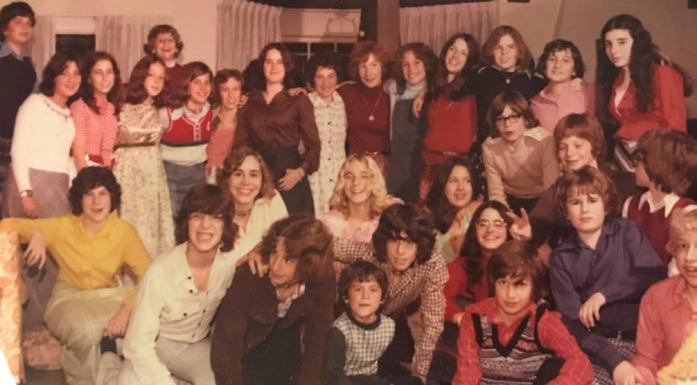

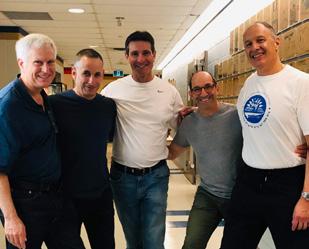
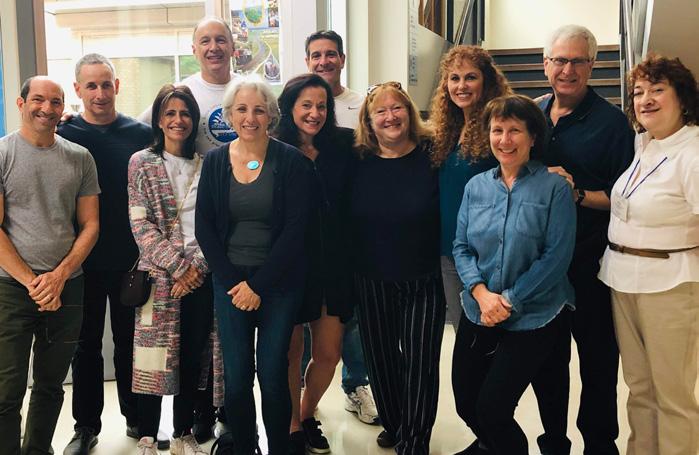
REUNIONS SPARK JOY!
Are you a Bialik alum? Are you wondering what your classmates have been doing since graduation? Would you like to get your class back together? As Gordon Hecker’76 said, “The joy associated with reconnecting was incredible.” To organize a reunion for your graduating class, visit bialik.ca/alumni


